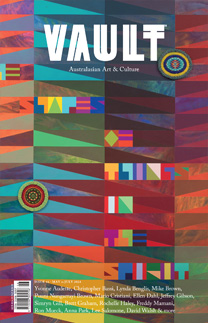Lee Kun-Yong
Born Free
In light of a recent exhibition at the 4A Centre for Contemporary Art, VAULT speaks, via translator, to Lee Kun-Yong, the legendary South Korean conceptual artist whose performances prove that our bodies might be our simplest and most radical tools.
How do you capture a life with a handful of questions? I’m still not sure. But it was a task that I was forced to consider, and eventually attempt, when I interviewed one of Korea’s most significant conceptual artists: Lee Kun-Yong. As a leading figure in the South Korean art scene in the 1960s and 1970s, Mr Lee helped establish a critical dialogue around contemporary performance art by folding theoretical complexities into physical spectacle. In his 1976 The Method of Drawing series, for instance, he dissected the fundamental assumptions that underpin one of humanity’s longest-standing modes of representation. The various permutations of his work saw the artist radically depart from familiar processes: he stood behind the artwork while drawing; faced away from it; drew the work around himself; and even cut it up. Through these performative interventions, each version of the work became both an index of its maker and its own making – rendering the invisible visible. Like most of his other works, conceptual intricacies found form in the simplest of gestures.
Yet despite enjoying international success at the time – showing at the 8th Biennale of Paris in 1973 and the 15th Biennale of São Paulo in 1979 – the evolution of Mr Lee’s practice was not without obstacle. The early ’70s saw South Korea’s president Park Chung-hee declare a state of martial law, halting the country’s political activities and censoring large sections of the press – and it was under these repressive conditions that Mr Lee laboured. Responding to thi... Subscribe to read this article in full






















